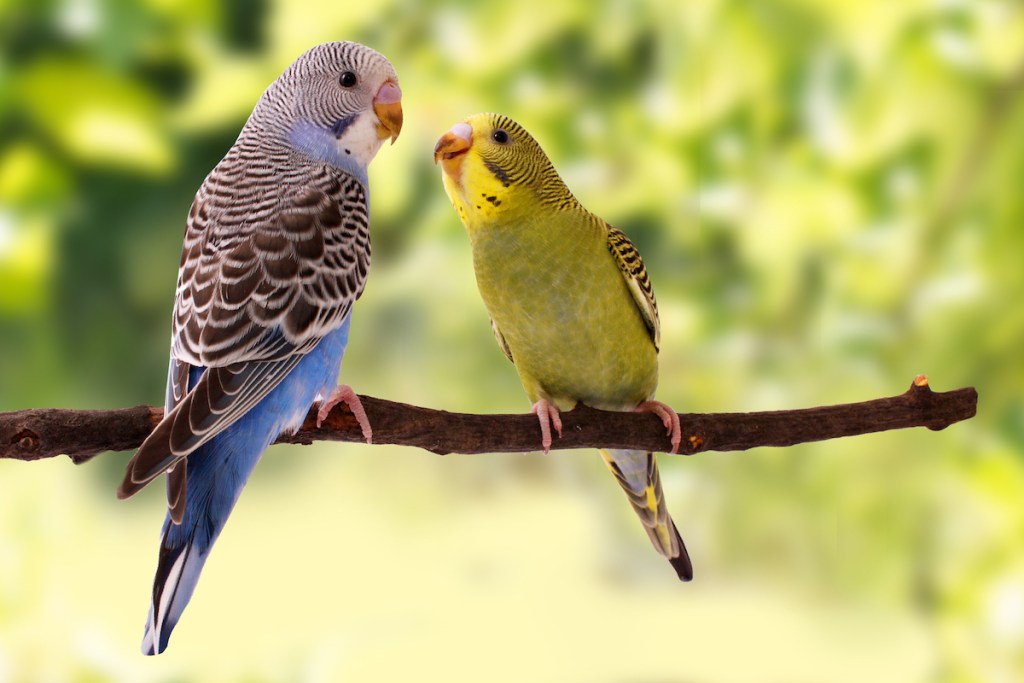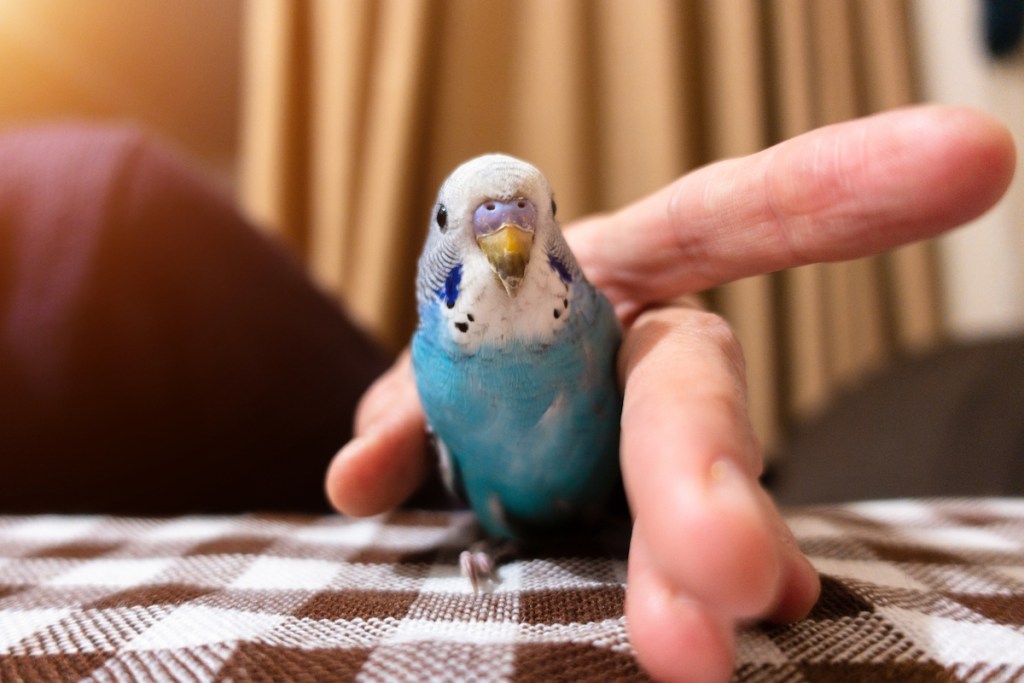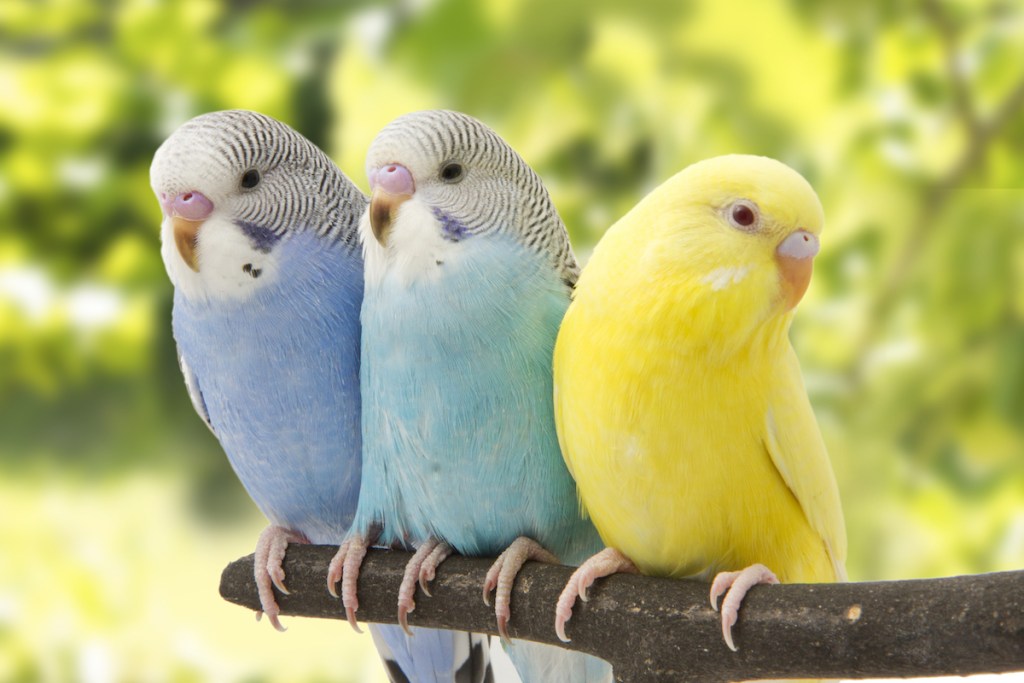Fun fact: After cats and dogs, parakeets are the most popular pet in America. Still, many pet parents, even experienced ones, won't know how to properly care for and outfit a budgerigar. This is everything you need to know to set yourself up for success and give your new bird a long and happy life.

What is a budgie?
If you said, a little parrot, you've got that right. While similar in theory to the African Grey and other large pet birds, you'll find the personality of a budgie to be quite different. They likely won't do much talking but can sing and chirp happily. As with any pet, they need the right food, plenty of exercise and play, and a proper house. We'll cover that part first.

How to set up your budgie's cage
Every type of bird needs a slightly different arrangement, so it's crucial to pick up parakeet items specifically and not those intended for an unrelated type of animal. Choose a cage that is at least 18 by 18 by 18 for one animal and nearly double that for two (which you'll probably need). These steps might apply more broadly but they'll work perfectly for your new budgerigar.
Step 1: Buy the materials.
There's a reason this one always comes first — it's important to get everything together before you officially bring home your pet. Finding yourself without the right items could easily become stressful since then you'll have to rush to pull everything together as it comes up.
Step 2: Pick a spot for the cage.
In some cases, you'll do this before you buy the cage because you need to measure a particular area carefully. However, many houses have plenty of room for a full-sized cage that you can then put in different places to see which one clicks. Budgies love natural light but don't set it up so they get too hot or can't find shade.
Step 3: Add the necessary items.
The first thing to think about is your liner, which is whatever you'll put on the bottom of the cage and change out regularly. Then you also need food and water dishes. Under necessities, you also can't forget somewhere for your bird to hide, though this can be something fun to design.
Step 4: Add a few perches.
Buy a couple of shapes, sizes, and materials. You'll notice quickly which ones your birdies love and which wind up unused. While you can make your own, don't ever put sticks in without treating them first.
Step 5: Give them some toys.
Here's the fun part! In truth, you will probably wind up changing things frequently, realizing your particular pets gravitate toward one type of toy over another. But it's good to have a few basics like a swing and puzzle to start. Don't forget treats.
Step 6: Introduce your bird.
At last, they arrive. While your instinct may be to play with them for hours on the first day, experts recommend putting them gently in the cage and leaving them to adjust. They need time to settle in before you make yourself known (with a treat of course).

How to care for your budgie
It will take a bit of time to acclimate to their new surroundings, about two weeks. Make sure you're interacting frequently since you don't want them to lose familiarity with people. After you set a routine, you'll care for your birdie with ease.
Step 1: Get your bird a companion.
One rule we need to establish at the outset: Never get just one of these birds. You need at least a pair or your new flyer will become lonely and depressed. If you don't want a whole flock, get one fixed or stick with two of the same sex.
Step 2: Feed daily.
Even if you invest in one of those refilling feeders, you still need to change it every day. Food can spoil and sometimes you might mistake old shells for full seeds. Water will quickly fill up with poop if you're not careful as well.
Step 3: Give them time outside the cage.
While a big home will allow them to fly around, it's great to have a dedicated playroom where your birds can have some supervised exercise time with a little more room.
Step 4: Clean regularly.
We mentioned the daily water and food changes. The rest of the cage should be scrubbed down about every week with liner replacements in between on an as-needed basis.
Step 5: Take them to the vet.
You might think of the animal doctor as a thing only for dogs and cats, but your bird will live longer and happier if you get them regular medical care.
The great thing about budgies is that they can live up to 10 years if you do all of these things and make sure they never want for anything. They also bond closely with humans — that must be why they rank as the third most popular pet. Plus, in addition to a companion, you also now have a musician in the house.
Editors' Recommendations
- Wondering what to feed a baby bird? Here’s how to take care of an orphaned bird
- Why do birds bob their heads? These are the reasons parrots and other birds do it
- Found an injured bird? Here’s how to help a bird with a broken wing
- Bunny care 101: If Easter inspires you to adopt a rabbit, read this first
- How to make a parrot’s perch with a natural branch (it’s easy!)




